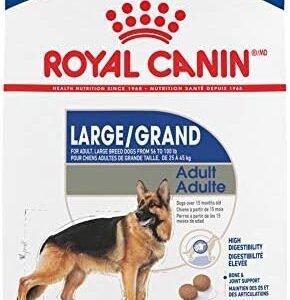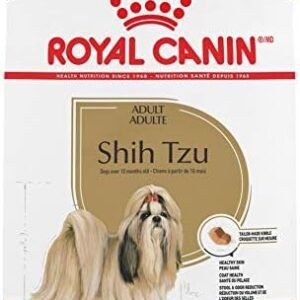Did you know that hydroxyzine can significantly improve dermatological symptoms in dogs with atopic dermatitis by 25% when paired with chlorpheniramine? This fact underscores the medication’s potential as a treatment for dogs, particularly for allergies and anxiety. Veterinarians frequently recommend hydroxyzine, a prescription antihistamine, for various canine health issues. This article delves into the uses, dosage, side effects, and real-world experiences with hydroxyzine for dogs. By understanding this medication, pet owners can make better health decisions for their dogs.
Key Takeaways
- Hydroxyzine is an effective antihistamine for dogs, helping reduce allergic reactions.
- The typical hydroxyzine dosage for dogs is 1mg per pound, administered one to three times daily.
- Possible side effects include drowsiness, excitement, and dry mouth among others.
- Hydroxyzine should be used cautiously in dogs with specific health conditions.
- This medication can also aid in managing anxiety and skin conditions in dogs.
- Veterinary supervision is essential for administering hydroxyzine safely.
What is Hydroxyzine?
Hydroxyzine is an H1 receptor antihistamine commonly prescribed for various conditions. In veterinary medicine, it’s mainly used to relieve allergies and itching in dogs. Its application goes beyond allergic reactions; it’s also vital for managing anxiety in pets, though this is often “off-label.”
This medication comes in tablets, liquid solutions, and injectables, making it a convenient option for dogs. The injectable form is mainly used in hospitals for immediate relief in emergencies. Brands like Atarax® and Vistaril® underscore its widespread use in both human and veterinary medicine.
Vets often recommend hydroxyzine for controlling itching in dogs and cats with atopic dermatitis. Though not FDA approved for pets, its use is widely accepted by vets, reflecting its proven effectiveness. Hydroxyzine pamoate comes in 25 mg and 50 mg capsules, allowing for tailored dosing based on the pet’s weight and needs.
However, pet owners should be mindful of possible side effects like dizziness, drowsiness, and nausea. Proper administration and monitoring are key to a successful outcome when using hydroxyzine as an antihistamine for dogs.
Understanding Hydroxyzine’s Mode of Action
Hydroxyzine is a medication primarily used as an antihistamine. It works by competing with histamine for receptor sites in the skin, respiratory tract, and blood vessels. This antihistamine function helps to reduce allergic reactions like itching and hives.
The hydroxyzine mechanism of action goes beyond just antihistamine effects. It also has anticholinergic, sedative, and antiemetic properties. These diverse effects make it useful for treating allergies, anxiety, and nausea in dogs. For example, when combined with corticosteroids, hydroxyzine improves the management of allergic symptoms.
Hydroxyzine starts showing its effects within 15 to 60 minutes after it is given, reaching its peak effectiveness around three hours later. This quick action is beneficial for dog owners looking for fast relief for their pets. However, hydroxyzine is typically a short-acting medication, with its effects lasting about 4 to 6 hours.
Hydroxyzine for Dogs: Uses and Indications
Hydroxyzine plays a crucial role in canine healthcare, effectively managing allergies in dogs. It is primarily used to alleviate itching and discomfort caused by atopic dermatitis, a prevalent skin condition. Additionally, it helps in treating allergic reactions from environmental allergens, foods, or fleas.
This medication is available in various forms, including tablets, oral syrups, and injections. The standard dosage for dogs is 2 milligrams per kilogram of body weight, given orally every 12 hours. Options include 10, 25, and 50-milligram tablets, as well as an oral syrup with 10 milligrams per 5 milliliters.
Hydroxyzine not only relieves itching but also has sedative effects, which can help reduce anxiety. However, it is important for owners to know that initial treatments for seasonal allergies in dogs might involve medications like Benadryl for severe symptoms. Hydroxyzine is considered a secondary option when other treatments fail to provide relief.
It is crucial to be aware of potential side effects, such as sedation, dry mouth, and decreased gastrointestinal activity. Although hydroxyzine is not FDA approved for veterinary use, veterinarians can legally prescribe it after evaluating the dog’s specific needs.
Hydroxyzine Dosage for Dogs
Ensuring the correct hydroxyzine dosage for dogs is essential for effective treatment. This medication, commonly prescribed, must be given correctly to ensure safety and efficacy. Typically, dogs receive 1 mg per pound every 6 to 8 hours. This dosage helps manage allergic reactions like itching and rashes, while reducing the risk of adverse effects.
Recommended Dosage Guidelines
Vets recommend a hydroxyzine dosage of 1 mg per pound, given no more than twice daily, capping at 2 mg per pound. It’s crucial to consider the dog’s health and any pre-existing conditions when setting the dosage. Regular monitoring of the pet’s response to treatment is advisable to ensure optimal dosing.
Frequency of Administration
Administration of hydroxyzine can occur every 6 to 8 hours, based on individual needs. For example, older or younger dogs, or those with pre-existing conditions, may need adjustments in administration frequency. It’s critical to monitor for effectiveness and side effects, with dosage modifications made at the vet’s discretion.
Missed Dose Instructions
If a dose of hydroxyzine is missed, give it as soon as you remember. Avoid double dosing if it’s nearing the next scheduled dose. Consistent timing in administering hydroxyzine helps maintain stable medication levels in the pet’s system. This maximizes its effectiveness while reducing potential side effects.
Hydroxyzine Side Effects in Dogs
Pet owners must understand the potential side effects of hydroxyzine in dogs. This medication can manage allergies or anxiety but comes with risks. Knowing both common and severe reactions helps ensure your pet’s safety and well-being.
Common Side Effects
Common reactions to hydroxyzine include:
- Drowsiness
- Dry mouth
- Constipation
- Lack of appetite
Many dogs become drowsy due to the medication, which might not be ideal for all owners. Dry mouth and reduced gut activity can also occur, leading to further issues.
Severe Side Effects to Watch For
While most dogs handle hydroxyzine well, some may face severe reactions. These can be:>
- Significant behavioral changes
- Seizures
- Difficulty breathing
It’s vital to watch your dog closely after giving them the medication. If you notice any unusual symptoms, seek veterinary help right away. Be aware of interactions with other tranquilizers, as hydroxyzine can cause deep sedation.
Potential Risks and Precautions
Hydroxyzine poses several medication risks for dogs that necessitate thorough evaluation. Ensuring your pet’s safety demands careful consideration of hydroxyzine precautions before its use. Dogs with pre-existing conditions, like heart disease, kidney issues, or those on other CNS depressants, should be approached with caution. These conditions elevate the risk of adverse reactions and complications.
Veterinarians are cautious when prescribing hydroxyzine to pregnant or nursing dogs. The risk of teratogenic effects during pregnancy underscores the importance of only using this medication under a vet’s guidance. Monitoring these dogs for side effects is crucial. Such precautions help reduce medication risks for dogs, ensuring a safer treatment experience.
The availability of various dosage forms, including film-coated tablets and oral solutions, highlights the need for careful consideration. Each form has its own set of instructions and considerations. Making informed decisions about hydroxyzine use is key to your dog’s health and well-being.
Administering Hydroxyzine to Dogs
When giving hydroxyzine to dogs, it’s crucial to pay close attention to the dosage and the form it comes in. You can give it with or without food. Feeding your dog before administering hydroxyzine might help prevent stomach upset, a common issue. Always follow the dog medication instructions your vet provides for your pet’s safety and health.
The typical dose for hydroxyzine in dogs is about 1 mg per pound of body weight. This should be given two to three times a day. It’s vital to use the correct form to avoid any problems. Hydroxyzine comes in tablets with various strengths like 10 mg, 25 mg, 50 mg, and 100 mg, all designed for dogs.
Before starting hydroxyzine, talk to your vet about any health issues your dog has. Dogs with glaucoma, heart disease, or those who are pregnant or nursing should not take this medication. Keep an eye on your dog for signs of drowsiness or behavioral changes while they’re on this medication.
| Dosage (mg/lb) | Administration Frequency | Formulation Availability |
|---|---|---|
| 1 mg | Two to three times daily | 10 mg, 25 mg, 50 mg, 100 mg tablets |
Following the right dosage and administration guidelines ensures you can effectively use hydroxyzine for treating allergies and anxiety in dogs. This approach prioritizes their health and well-being.
Comparison with Similar Medications
Understanding hydroxyzine’s position among similar medications aids in making informed decisions for your pet’s health. Hydroxyzine, when compared to other antihistamines like Benadryl, shows distinct differences in usage, effectiveness, and side effects. Each medication has unique properties, making them suitable for different canine conditions. Knowing about alternatives to hydroxyzine empowers pet owners to make better choices.
Hydroxyzine vs. Benadryl
Hydroxyzine and Benadryl are both antihistamines, but they differ in their applications. Hydroxyzine is often chosen when Benadryl fails, especially for severe allergic reactions. It offers a longer-lasting effect, ideal for chronic conditions. On the other hand, Benadryl acts faster.
Hydroxyzine vs. Other Antihistamines
Understanding hydroxyzine in relation to other antihistamines is crucial for selecting the right option. For instance, cetirizine (Zyrtec) is less sedating than hydroxyzine, making it a better choice for pets sensitive to drowsiness. While hydroxyzine excels in certain chronic conditions, other alternatives may offer relief with fewer side effects.
Cost and Efficacy Comparison
For pet owners, evaluating the cost and efficacy of antihistamines is essential. Hydroxyzine, being prescription-only, may come with higher initial costs. Benadryl, available over-the-counter, could be more budget-friendly for immediate needs. A thorough cost analysis should consider not just the upfront expenses but also the long-term health benefits of each medication.
| Medication | Available Dosages | Common Use Cases | Typical Side Effects | Cost |
|---|---|---|---|---|
| Hydroxyzine | 10 mg, 25 mg, 50 mg, 100 mg tablets | Chronic allergies, severe allergic reactions | sedation, dry mouth, tremors | Higher prescription cost |
| Benadryl | 25 mg, 50 mg tablets | Immediate allergic reactions, mild allergies | sedation, dizziness, dry mouth | Lower over-the-counter cost |
| Cetirizine (Zyrtec) | 10 mg, 20 mg tablets | Mild to moderate allergies | Less sedation, headache | Moderate over-the-counter cost |
Hydroxyzine Alternatives for Dogs
Exploring hydroxyzine alternatives for dogs can significantly enhance your pet’s well-being during allergy seasons. Beyond hydroxyzine, options like Apoquel stand out as viable alternatives. This medication, a newer generation, offers relief from itching and inflammation.
Apoquel, approved in 2013, targets specific pathways to reduce itching and inflammation. Initially, it’s given twice daily for two weeks, then once daily for maintenance. Its efficacy is marked by a low side effect profile, including vomiting and diarrhea. However, a potential link to cancer raises concerns, underscoring the importance of vet consultations.
Cytopoint, an injection, also addresses allergy symptoms, offering significant relief for seasonal allergies. When combined with traditional antihistamines like Benadryl, Loratadine, and Cetirizine, these other dog allergy medications provide diverse approaches to allergy management.
Many dog owners report antihistamines help alleviate symptoms, especially for type-1 hypersensitivity reactions. These medications are administered every 8-12 hours, with some options suitable for daily use based on the dog’s weight.
Natural supplements, such as Omega-3 fatty acids, Quercetin, and probiotics, can also aid in managing allergies. Omega-3s decrease skin inflammation, Quercetin acts as a natural antihistamine, and probiotics support gut health and immune function.
Choosing the right approach for your dog’s allergies requires a collaborative effort with your veterinarian. This ensures consideration of all hydroxyzine alternatives for dogs and other dog allergy medications available.
Hydroxyzine for Dogs: Treating Allergies and Itching
Hydroxyzine is a potent antihistamine, commonly used to treat allergic reactions in dogs. It excels in managing symptoms tied to various allergies, including those affecting dogs. This medication eases the discomfort of conditions like atopic dermatitis, which causes excessive itching. By tackling these allergies, hydroxyzine significantly improves your pet’s quality of life.
This medication comes in various forms, including tablets, liquids, and capsules, catering to different pets. For dogs, hydroxyzine’s effects are swift, often taking 1 to 2 hours to kick in. This quick relief is crucial for those experiencing severe allergy symptoms.
While generally safe when used as directed, hydroxyzine may cause side effects such as drowsiness, increased thirst, constipation, and heightened excitement. Rare but serious side effects include difficulty urinating or seizures, requiring immediate veterinary care if they occur.
It’s crucial to avoid prescribing hydroxyzine to dogs with allergies to the drug or those with specific health conditions like heart failure or urinary blockage. The decision to use this medication must weigh its risks and benefits, with a veterinarian’s guidance.
| Aspect | Details |
|---|---|
| Usage | Treats allergies causing itching |
| Forms Available | Tablets, liquid solutions, capsules |
| Onset of Action | 1 to 2 hours |
| Common Side Effects | Drowsiness, dry mouth, constipation |
| Serious Side Effects | Difficulty urinating, seizures |
| Contraindications | Allergy to hydroxyzine, heart conditions, certain urinary issues |
| Storage Instructions | Room temperature, away from light |
In summary, hydroxyzine is a crucial medication for treating dog itching and managing allergies. Consulting with a veterinarian ensures the medication is used safely and effectively, helping to alleviate allergic conditions in dogs.
Hydroxyzine for Dogs Anxiety Management
Hydroxyzine is a notable choice for treating anxious dogs, thanks to its sedative effects. It effectively manages hydroxyzine for dogs anxiety, crucial during stressful events like travel or loud noises. Owners have seen significant improvements in their pets’ well-being post-treatment, noting its swift action within 1 to 2 hours.
It’s vital for pet owners to be aware of possible side effects when using hydroxyzine. Sedation is a common side effect that can be beneficial for anxious dogs. Yet, severe side effects like difficulty urinating or seizures can occur, highlighting the need for careful monitoring. Thus, consulting a veterinarian before starting anxious dogs treatment is crucial.
Hydroxyzine may interact with certain medications, including anticholinergic agents and central nervous system depressants, which can increase sedation. Therefore, a veterinarian’s careful evaluation and management are essential for safe and effective treatment.
| Aspect | Details |
|---|---|
| Rapid Effect | 1 to 2 hours |
| Common Side Effect | Sedation |
| Severe Side Effects | Difficulty urinating, seizures |
| Usage Restrictions | Not for pets allergic to hydroxyzine or cetirizine, with heart failure, or urinal tract conditions |
| Dosage | 1 mg per pound, typically 1-3 times daily |
| Brand Names | Vistaril, Restall |
In conclusion, hydroxyzine is a potent tool in addressing hydroxyzine for dogs anxiety. It offers dual benefits by reducing stress and managing allergic reactions in dogs. Consulting with a veterinarian ensures the treatment is safe, maximizing benefits while minimizing risks.
Hydroxyzine for Dogs: Owner Reviews and Experiences
Reviews from pet owners shed light on the impact of hydroxyzine on dogs. Many report a notable improvement in their pets’ quality of life. Issues like itching and anxiety are significantly reduced. After using hydroxyzine, dogs show less discomfort and are calmer.
Some owners share how hydroxyzine helps manage allergic reactions, allowing their pets to live more normally. They note the medication’s effects kick in within 1 to 2 hours. However, reactions to hydroxyzine vary greatly, influenced by the dog’s health, weight, and sensitivity to drugs.
Many owners praise hydroxyzine for its role in reducing anxiety during stressful events. Dogs seem less fearful during thunderstorms and fireworks. Yet, some owners face challenges, like their pets becoming sedated or lethargic. This prompts them to closely watch their pets’ reactions to the treatment.
| Owner Experience Highlights | Reported Outcomes |
|---|---|
| Improved Comfort | Many pets show less itching and discomfort. |
| Reduced Anxiety | Dogs appear calmer during stressful events. |
| Side Effects | Some owners report sedation and clumsiness. |
| Usage Frequency | Daily administration for ongoing issues. |
| Effectiveness | Positive feedback for allergic reactions management. |
Conclusion
Hydroxyzine is a versatile medication, effectively managing allergies and anxiety in dogs under a vet’s guidance. It boasts a high systemic availability of 72%, enhancing its effectiveness for various conditions. Additionally, its rapid conversion to cetirizine ensures prolonged therapeutic action, making it a viable choice for many dogs.
However, careful consideration of dosage and administration is crucial. Optimal results often require a dosage of 2 mg/kg twice daily. The summary on hydroxyzine underscores the variability in individual responses. Therefore, continuous monitoring is vital to prevent side effects and ensure safe treatment outcomes.
The benefits of hydroxyzine for dogs go beyond just treating allergies. With proper use and veterinary advice, it can significantly improve the quality of life for pets with anxiety and related issues. Owners should consult with their vets to find the best treatment plans for their dogs’ unique needs.
























